 Around the end of last spring, I was contacted by a guy who wanted to do new graphics for my app. I was actually kind of proud of my old logo, but I decided to write him back. He offered to do it all for free as long as he could use it for his portfolio. Deal! When he sent over the first few samples, I knew the app was in for a big upgrade.
Around the end of last spring, I was contacted by a guy who wanted to do new graphics for my app. I was actually kind of proud of my old logo, but I decided to write him back. He offered to do it all for free as long as he could use it for his portfolio. Deal! When he sent over the first few samples, I knew the app was in for a big upgrade.
In addition to a complete graphics overhaul which you can see in the video below, I added some new features. Before the app would pull in specific details for each resort as you flipped from page to page. Now the whole thing is cached on my server and when the app loads, it pulls it all down at once. That makes it a lot faster to flip from resort to resort. You can also filter and sort the resorts which is a feature that people have been asking for since I launched. There are more features coming, but I launched a couple weeks ago to get this into people’s hands.
Want to learn more about Jeremy, the graphic designer? Go check out his website at sanfoj.com. And while you’re at it, go check out the medal design contest for the Winter X-Games. Both he and his girlfriend (JoEllen) had their designs make it to the final round of 16! Voting ends today so vote now!
If you have a Windows Phone, go check it out! And if you don’t have one, sorry, but it’s pretty unlikely that I’ll do this for Android and extremely unlikely that I’ll buy a Mac just to put it on the iPhone.

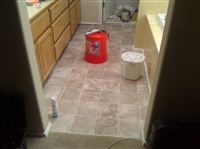 When we bought our house, the master bathroom had carpeting and no door. Odd, yes. There is a separate toilet room at the end of the bathroom and that part did have a door, but it’s still a bit weird to have someone watch you in the shower.
When we bought our house, the master bathroom had carpeting and no door. Odd, yes. There is a separate toilet room at the end of the bathroom and that part did have a door, but it’s still a bit weird to have someone watch you in the shower.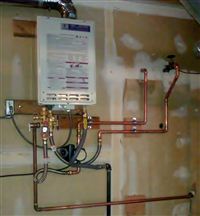 Our house came with a long list of appliances that needed to be replaced. Chelsea’s Dad, Brent, has a heating and cooling company (PMG Mechanical 206-624-5040) so I called him out to take a look at our water heater and furnace. His opinion about the water heater lined up with our inspector and a plumber that had been at the house: replace it soon. The furnace? That’s next year. Yeehaw.
Our house came with a long list of appliances that needed to be replaced. Chelsea’s Dad, Brent, has a heating and cooling company (PMG Mechanical 206-624-5040) so I called him out to take a look at our water heater and furnace. His opinion about the water heater lined up with our inspector and a plumber that had been at the house: replace it soon. The furnace? That’s next year. Yeehaw.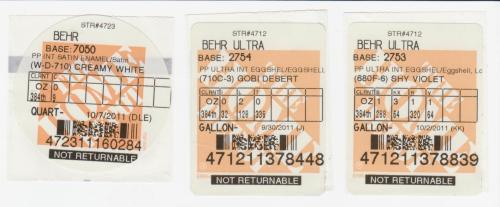
 Back in 2007 I wrote about the
Back in 2007 I wrote about the 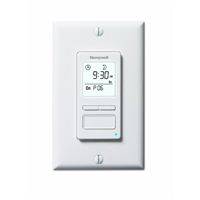 Every night since moving in, I have been doing battle with the external light timer. The previous owner left instructions, and I found the manual online, but no matter what I did, I couldn’t get them to work correctly. Even when I set the program, the timer drifted and would be wrong by the next day.
Every night since moving in, I have been doing battle with the external light timer. The previous owner left instructions, and I found the manual online, but no matter what I did, I couldn’t get them to work correctly. Even when I set the program, the timer drifted and would be wrong by the next day.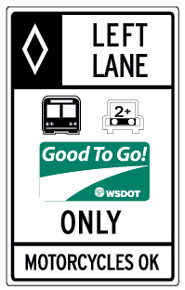 One of the best laws I learned about when I got the motorcycle was that motorcycles are always allowed in HOV lanes (also known as carpool lanes and diamond lanes.) Now that 405 is the fastest route to work, I’m on the motorcycle a lot more because it’s so much faster than sitting in traffic.
One of the best laws I learned about when I got the motorcycle was that motorcycles are always allowed in HOV lanes (also known as carpool lanes and diamond lanes.) Now that 405 is the fastest route to work, I’m on the motorcycle a lot more because it’s so much faster than sitting in traffic.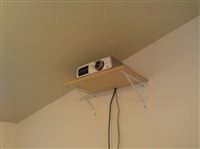 The first step after getting the projector running was getting it mounted. One reason I picked the Epson 8350 is that it has a huge amount of available vertical and horizontal lens shift. This allows you to place the projector just about wherever you want and then place the image at the right spot with no distortion. It will move the image about one screen above and below the lens and one screen right and left of the lens. There aren’t many other projectors in this price range that will do that.
The first step after getting the projector running was getting it mounted. One reason I picked the Epson 8350 is that it has a huge amount of available vertical and horizontal lens shift. This allows you to place the projector just about wherever you want and then place the image at the right spot with no distortion. It will move the image about one screen above and below the lens and one screen right and left of the lens. There aren’t many other projectors in this price range that will do that.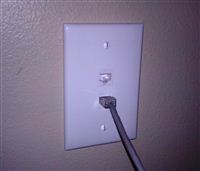 While I would love to have network cable installed in the entire house and run to a nice patch panel, realistically that’s either going to take me forever or cost a lot of money. So for now I’ve settled with running a couple wires from the family room to the theater room. The rooms sit on top of each other and share a wall in the garage, so it was a pretty simple job. I ran the cable out through the wall in the family room to the garage, up the other side of the wall, and then punched through into the theater room. It ended up looking really nice because all of the networking gear can stay upstairs in that room and the family room just gets the TV and a PC to drive it.
While I would love to have network cable installed in the entire house and run to a nice patch panel, realistically that’s either going to take me forever or cost a lot of money. So for now I’ve settled with running a couple wires from the family room to the theater room. The rooms sit on top of each other and share a wall in the garage, so it was a pretty simple job. I ran the cable out through the wall in the family room to the garage, up the other side of the wall, and then punched through into the theater room. It ended up looking really nice because all of the networking gear can stay upstairs in that room and the family room just gets the TV and a PC to drive it.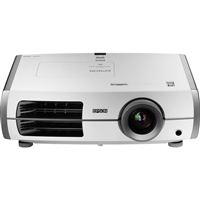 Tyla thinks we bought this house so that we’d have more room, own some dirt, etc etc etc. Wrong. We bought this house so that I could have a projector again. Those of you who have been reading for a while may remember that back in Jersey, we had a little
Tyla thinks we bought this house so that we’d have more room, own some dirt, etc etc etc. Wrong. We bought this house so that I could have a projector again. Those of you who have been reading for a while may remember that back in Jersey, we had a little